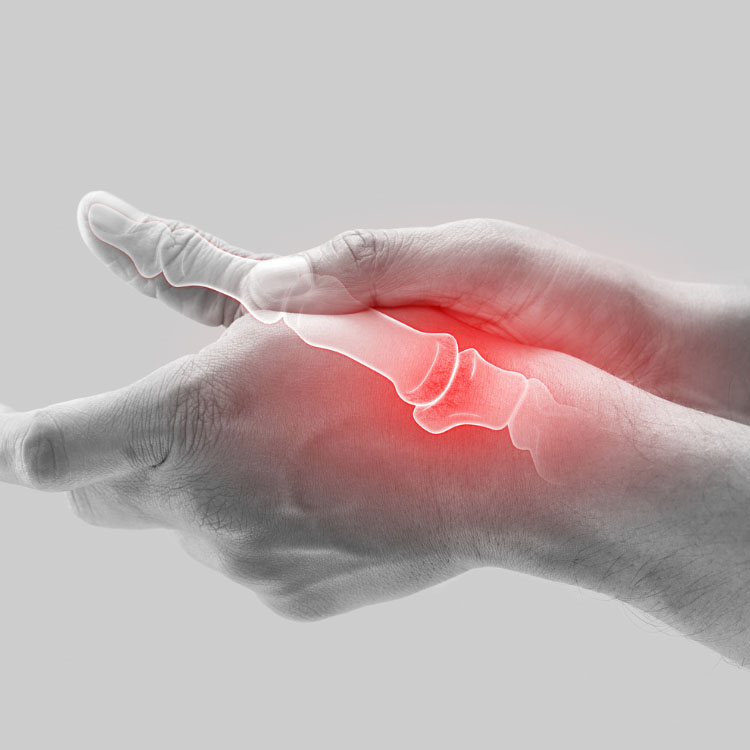Arthritis Symptoms and Types
Different types of arthritis have different symptoms. The pain and stiffness in and around one or more joints are common symptoms for most types of arthritis. Depending on the type, symptoms can develop suddenly or gradually over time. Symptoms may even come and go, or persist over time.
Symptoms of Osteoarthritis
- Joint pain
- Stiffness when waking up or after sitting for a long period
- Tenderness—pain when the area is touched
- Limited range of motion
- Grating sensation—feeling things rubbing together inside the joint
- Bone spurs—bony lumps that form around the joint
Symptoms of Rheumatoid Arthritis
- Joint pain, swelling, and tenderness lasting six weeks or longer
- Morning stiffness lasting at least 30 minutes
- More than one joint affected, especially in the hands, wrists, and feet
- Symmetrical joint involvement—affecting the same joints on both sides of the body
Symptoms of Infectious Arthritis
- Fever
- Chills
- Joint inflammation and tenderness
- Sharp pain linked to an injury or infection elsewhere in the body
Symptoms of Juvenile Arthritis
- Recurring fever
- Loss of appetite
- Unexplained weight loss
- Anemia
- Blotchy rash on the arms and legs
- Joint stiffness and swelling
- Limping due to joint pain
What You Should Do About Your Arthritis
In inflammatory types of arthritis, it is important to control inflammation. Treatment can include medications, non-drug therapies such as physical therapy or patient education, and sometimes surgery.
There are a lot of things you can do to manage your arthritis. The day-to-day things you choose to do to manage your condition and stay healthy are “self-management” strategies and activities. Physical activity is another simple and effective, non-drug way to relieve arthritis pain. Being physically active can reduce pain, improve function, mood, and quality of life for adults with arthritis. You will also need to talk to your doctor if you have joint pain and other arthritis symptoms. It’s important to get an accurate diagnosis as soon as possible.
For people who are overweight or obese, losing weight will reduce stress on joints, particularly weight bearing joints like the hips and knees. Choose activities that are easy on the joints like walking, bicycling, and swimming. These low-impact activities have a low risk of injury and do not twist or put too much stress on the joints.


